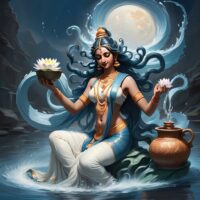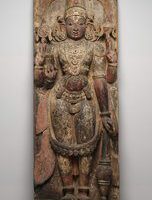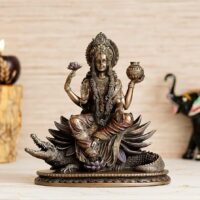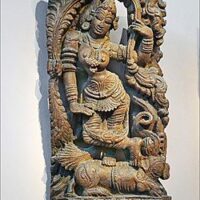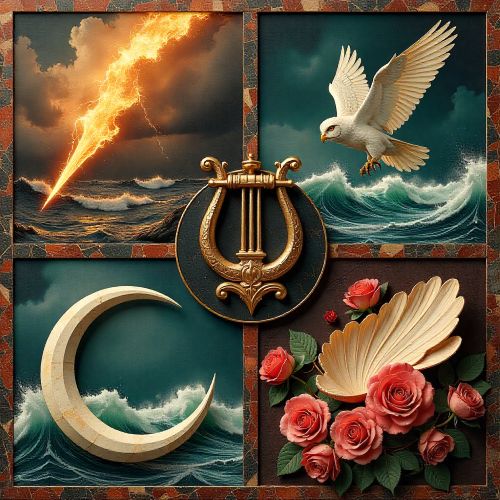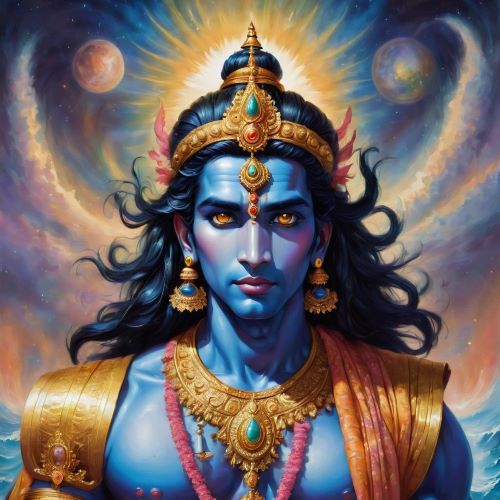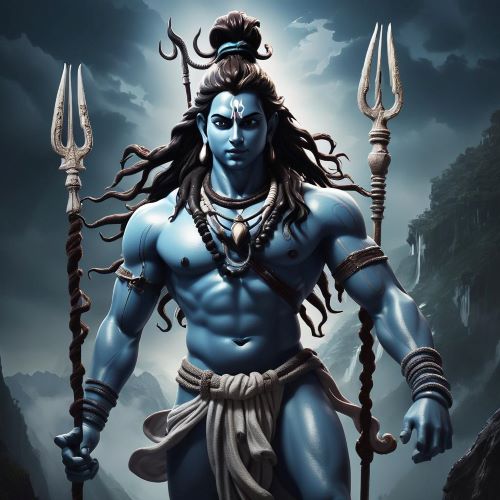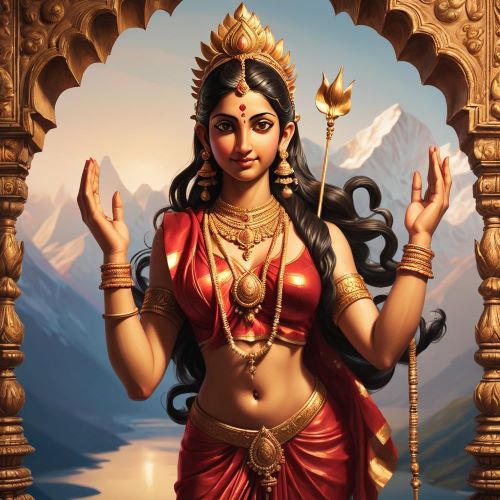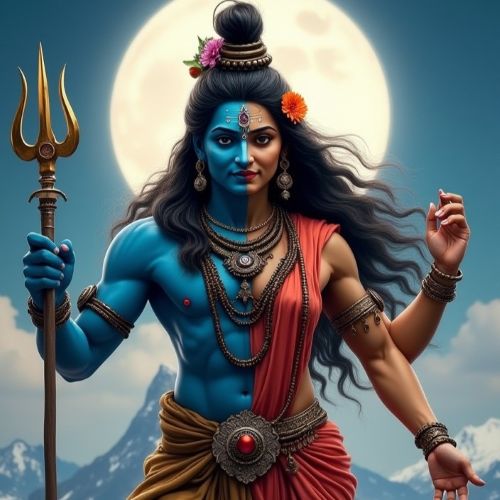Ganga : The Sacred River
Listen
At a glance
| Description | |
|---|---|
| Origin | Indian Mythology |
| Classification | Gods |
| Family Members | N/A |
| Region | Himavat (Father) |
| Associated With | River, Purification |
Ganga
Introduction
Ganga is not just a river; she is a living embodiment of spirituality, purity, and divine compassion in Indian mythology. Revered across centuries, she is both a goddess and a geographical force, worshipped by millions and considered the holiest of all rivers in Hinduism. Her story flows through ancient scriptures like the Mahabharata, Ramayana, and various Puranas, where she emerges as a celestial being whose descent to Earth was an act of divine grace. More than a waterway, Ganga represents a bridge between the heavens and the mortal world—a purifier of sins and a symbol of life, death, and rebirth.
Physical Traits
In religious art and temple sculptures, Goddess Ganga is often illustrated as a graceful, radiant woman, exuding calmness and power. She is usually shown seated or standing on a Makara—a mythical creature with the body of a crocodile and features of a fish or elephant—symbolizing her dominion over aquatic realms. Dressed in flowing white or blue garments, which signify serenity and holiness, she carries a pot filled with sacred water, symbolizing fertility and abundance. The lotus she sometimes holds represents divine beauty and purity. Ganga’s visuals often evoke a blend of maternal benevolence and unyielding natural strength.
Family
Little is known about the Aigamuxa’s family or connections to other beings in Khoikhoi mythology. The legends primarily emphasize its terrifying nature, hunting habits, and encounters with humans rather than any social structure or lineage. As a result, folklore offers no clear references to relatives or a broader species, leaving the creature’s origins and relationships a mystery.
Other names
Ganga is known by numerous names, each highlighting a unique aspect of her mythos. Bhagirathi honors King Bhagiratha, whose penance brought her to Earth. Jahnavi stems from the tale of Sage Jahnu, who swallowed her floodwaters and later released them, thus becoming her symbolic father. Names like Mandakini, Alakananda, and Dhauliganga also reference tributaries or spiritual dimensions of the river. These epithets reflect her presence in different regions, legends, and theological interpretations, enriching her identity beyond a single narrative.
Powers and Abilities
What makes Ganga extraordinary in mythology is her immense spiritual potency. She is considered the ultimate purifier—those who bathe in her waters are believed to wash away not only physical impurities but karmic debts. Rituals involving the immersion of ashes in the Ganga are believed to grant the deceased liberation (moksha) from the cycle of rebirth. Her flow represents the journey of the soul—originating from a divine source, passing through the physical realm, and finally merging with the eternal. Her presence is also associated with fertility and life-giving abundance, as her waters nourish millions of acres of agricultural land across northern India.
Beyond her symbolic value, Ganga is said to traverse three realms—heaven, earth, and the underworld—earning her the title Tripathaga (the one who travels three paths). She serves as a divine connector, her waters bridging the cosmos and humanity in an uninterrupted flow of spiritual grace.
Modern Day Influence
Today, the influence of Ganga extends far beyond mythology and ritual. She remains central to the cultural and spiritual landscape of India, particularly in cities like Varanasi, Haridwar, and Rishikesh, which are famed pilgrimage destinations. Ceremonies such as the Ganga Aarti—a daily ritual of offering fire and prayers to the river—draw thousands of devotees and tourists who gather to witness and partake in the spiritual spectacle.
The river’s economic and ecological roles are equally vital. She supports agriculture, drinking water supplies, and industry for over 400 million people. Despite being a sacred entity, Ganga is critically polluted due to industrial waste, untreated sewage, and domestic refuse. The contradiction between her spiritual purity and physical degradation has led to major initiatives like the Ganga Action Plan and Namami Gange Mission, which aim to restore her ecological health. While these efforts have met with mixed success, they underscore the deep connection Indians feel to the river, motivating collective action for her preservation.
Ganga also serves as a cultural touchstone in literature, music, cinema, and visual art. From classical poetry to contemporary documentaries, she is invoked as a metaphor for purity, struggle, and resilience. Politicians, activists, and artists often draw upon her symbolism to express national pride or environmental urgency, reinforcing her relevance in both sacred and secular contexts.
Related Images
Source
The Mahabharata (translated by C. Rajagopalachari)
Ganga – The River of Local and National Importance, Alike!! – IUCN. (2019). https://iucn.org/news/commission-environmental-economic-and-social-policy/201910/ganga-river-local-and-national-importance-alike
Ganges River | History, Map, Location, Pollution, & Facts | Britannica. (2025). https://www.britannica.com/place/Ganges-River
Contributors to Wikimedia projects. (n.d.). Ganga (goddess) – Wikipedia. https://en.wikipedia.org/wiki/Ganga_(goddess)
Frequently Asked Questions
What is lorem Ipsum?
I am text block. Click edit button to change this text. Lorem ipsum dolor sit amet, consectetur adipiscing elit. Ut elit tellus, luctus nec ullamcorper mattis, pulvinar dapibus leo.
What is lorem Ipsum?
I am text block. Click edit button to change this text. Lorem ipsum dolor sit amet, consectetur adipiscing elit. Ut elit tellus, luctus nec ullamcorper mattis, pulvinar dapibus leo.
What is lorem Ipsum?
I am text block. Click edit button to change this text. Lorem ipsum dolor sit amet, consectetur adipiscing elit. Ut elit tellus, luctus nec ullamcorper mattis, pulvinar dapibus leo.
What is lorem Ipsum?
I am text block. Click edit button to change this text. Lorem ipsum dolor sit amet, consectetur adipiscing elit. Ut elit tellus, luctus nec ullamcorper mattis, pulvinar dapibus leo.
What is lorem Ipsum?
I am text block. Click edit button to change this text. Lorem ipsum dolor sit amet, consectetur adipiscing elit. Ut elit tellus, luctus nec ullamcorper mattis, pulvinar dapibus leo.


